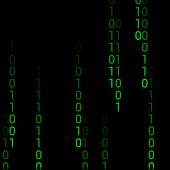In the north Bandung, where Mount Tangkuban Parahu now, there is a giant volcano, Mount Jayagiri name. The mountain is then burst his mighty until mengambrukkan formed caldera, the crater is very broad. From this side of the caldera Jayagiri grow a new mountain, namely Mount Sunda. The eruption of Mount Sunda mahadahsyat has mengambrukkan body forming the caldera. From this Sunda Mountain caldera of Mount Tangkuban Parahu formed. Until now, the grandson of Mount Jayagiri continues to show activity, forming a natural follow her ancestors.
Mountain caldera complex Sunda and Mountain Tangkubanparahu save the earth a very long history. This mountain has the allure and charm of a remarkable and continues to receive attention. This region not only has the diversity of the earth, but also biodiversity, both flora and fauna. The leopard (Panthera pardus sondaicus) which became a symbol fauna of West Java was still found there. Mochamad Nugraha Kartadinata (MNK, 2005) has reviewed in depth Tangkubanparahu Mountain and Mount Sunda. The data used as basis of study results in this paper.
Sunda Mountain (1854 m asl) contained in the map, it is just a small cone in the caldera of Mount Sunda long series. Mount Sunda which is actually built with wide base of the mountain 20 km more, with an altitude of ± 4000 m asl. Very high indeed probably more than it estimated. In general, the mountain that erupted to form a caldera, destroying two-thirds of the mountain body. If the current highest point of Mount Sunda caldera is 2080 meters above sea level. That is, the higher the mountain is only one third part of the Mount Sunda.
Before Mount Sunda awoke, there were Jayagiri Mt. First eruptions of lava flows that occurred in the span of time between 560000-500000 years ago. Later eruptions of this mountain mengambrukkan body to form the caldera.
Three centuries later, it occurred from the caldera eruptions that build new mountain, namely Mount Sunda. The massive eruption of Mount Sunda by Mochamad divided into three major eruption episodes.
The first episode of eruptions of lava flows, occurred between 210000-128000 years ago. The second episode occurred 13 units eruption. In one unit of eruption can occur more than once a major eruption. The third episode of eruptions of this mountain mengambrukkan body to form a caldera that occurred ± 105 000 years ago.
The third episode of the eruption of Mount Sunda subdivided into three phases of the eruption. First, the Plinian phase, the eruption with a very high gas pressure, throws as much as 1.96 km3 of material into space, forming eruption columns as high as 20 km with an umbrella eruptions along the 17.5 km and 7 km wide.
Second phase of freatomagmatik, eruption ejecting clouds of dust with grains of volcanic gravel, the volume is 1.71 km3.
Overlies the third phase, which occurs ± 105 000 years ago, according to research Dalimin Hadisantono Rudy (1988), volume 66 km3 flung that leads to the northwest, south and east of the eruption center, covering an area of 200 km2 with an average thickness of 40 meters, as can be seen in Ciseupan, in Campaka, Cisarua, Kampung Manglayang, and Cipeusing. Not counting the 40 percent of the total volcanic material that hovers in the sky and crashed in a very distant hemisphere. Since the number of released material, resulting in the collapse of most of the body of Mount Sunda, forming the caldera area of 6.5 x 7.5 km.
In this third phase of the massive eruption of Mount Sunda eruption material immediately bury anything that ditimpanya. Wilderness buried along with living things in it, such as rhinoceros, deer, antelope who was in the valley Ci Tarum, the distance is ± 35 km from the center of the eruption (Umbgrove and Stehn: 1929, van Bemmelen RW: 1936, Th. Klompe HF : 1956). Wood charcoal about the size of the transverse direction of arrival of the drum hot clouds found in the excavation of sand Ciseupan, Cibeber, City Cimahi.
From the above description can be deduced, the third phase of the eruption of Mount Sunda hill that has Tarum Ancient Ci Padalarang north, forming a huge lake, Lake Ancient Bandung. Part of the river in the downstream direction that does not accumulate Ci called Meta, a small river in the valley of Ancient Ci Tarum.
From the caldera of Mount Sunda was then born Tangkubanparahu Mt. Eruptions-eruptions are divided into two categories eruption, namely the eruption of Mount Tangkubanparahu old between 90000-10000 years ago, also had as many as 30 units erupted eruption. The eruption of Mount Tangkubanparahu youth between 10000-50 years ago, also erupted 12 units of the eruption.
H. Tsuya classify the degree of intensity of volcanic eruptions into nine levels, ranging from the degree of one that just blew up fumarola degrees IX who threw volcanic material more than 100 km3. If the volcanic material was able to catapult from his body between 10-100 km3, can have a degree of intensity VIII classified. Mount Sunda include this category because the third phase of the eruption threw as many as 66 km3 of volcanic material. This number is actually 60 percent just because a precipitate which is calculated only on the surface. While that was flown to various parts of the earth is not counted, the number reached 40 percent. When all added together, the virulence of Mount Sunda close category IX.
Sources: Indonesia Geographic
Articles Editor: Azhar Eka Pranata
Mountain caldera complex Sunda and Mountain Tangkubanparahu save the earth a very long history. This mountain has the allure and charm of a remarkable and continues to receive attention. This region not only has the diversity of the earth, but also biodiversity, both flora and fauna. The leopard (Panthera pardus sondaicus) which became a symbol fauna of West Java was still found there. Mochamad Nugraha Kartadinata (MNK, 2005) has reviewed in depth Tangkubanparahu Mountain and Mount Sunda. The data used as basis of study results in this paper.
Sunda Mountain (1854 m asl) contained in the map, it is just a small cone in the caldera of Mount Sunda long series. Mount Sunda which is actually built with wide base of the mountain 20 km more, with an altitude of ± 4000 m asl. Very high indeed probably more than it estimated. In general, the mountain that erupted to form a caldera, destroying two-thirds of the mountain body. If the current highest point of Mount Sunda caldera is 2080 meters above sea level. That is, the higher the mountain is only one third part of the Mount Sunda.
Before Mount Sunda awoke, there were Jayagiri Mt. First eruptions of lava flows that occurred in the span of time between 560000-500000 years ago. Later eruptions of this mountain mengambrukkan body to form the caldera.
Three centuries later, it occurred from the caldera eruptions that build new mountain, namely Mount Sunda. The massive eruption of Mount Sunda by Mochamad divided into three major eruption episodes.
The first episode of eruptions of lava flows, occurred between 210000-128000 years ago. The second episode occurred 13 units eruption. In one unit of eruption can occur more than once a major eruption. The third episode of eruptions of this mountain mengambrukkan body to form a caldera that occurred ± 105 000 years ago.
The third episode of the eruption of Mount Sunda subdivided into three phases of the eruption. First, the Plinian phase, the eruption with a very high gas pressure, throws as much as 1.96 km3 of material into space, forming eruption columns as high as 20 km with an umbrella eruptions along the 17.5 km and 7 km wide.
Second phase of freatomagmatik, eruption ejecting clouds of dust with grains of volcanic gravel, the volume is 1.71 km3.
Overlies the third phase, which occurs ± 105 000 years ago, according to research Dalimin Hadisantono Rudy (1988), volume 66 km3 flung that leads to the northwest, south and east of the eruption center, covering an area of 200 km2 with an average thickness of 40 meters, as can be seen in Ciseupan, in Campaka, Cisarua, Kampung Manglayang, and Cipeusing. Not counting the 40 percent of the total volcanic material that hovers in the sky and crashed in a very distant hemisphere. Since the number of released material, resulting in the collapse of most of the body of Mount Sunda, forming the caldera area of 6.5 x 7.5 km.
In this third phase of the massive eruption of Mount Sunda eruption material immediately bury anything that ditimpanya. Wilderness buried along with living things in it, such as rhinoceros, deer, antelope who was in the valley Ci Tarum, the distance is ± 35 km from the center of the eruption (Umbgrove and Stehn: 1929, van Bemmelen RW: 1936, Th. Klompe HF : 1956). Wood charcoal about the size of the transverse direction of arrival of the drum hot clouds found in the excavation of sand Ciseupan, Cibeber, City Cimahi.
From the above description can be deduced, the third phase of the eruption of Mount Sunda hill that has Tarum Ancient Ci Padalarang north, forming a huge lake, Lake Ancient Bandung. Part of the river in the downstream direction that does not accumulate Ci called Meta, a small river in the valley of Ancient Ci Tarum.
From the caldera of Mount Sunda was then born Tangkubanparahu Mt. Eruptions-eruptions are divided into two categories eruption, namely the eruption of Mount Tangkubanparahu old between 90000-10000 years ago, also had as many as 30 units erupted eruption. The eruption of Mount Tangkubanparahu youth between 10000-50 years ago, also erupted 12 units of the eruption.
Sources: Indonesia Geographic
Articles Editor: Azhar Eka Pranata
-
Facebook
Like Our Page .:MJN Tech:.Like us On Facebook
-
Google+
Add Us To your CircleAdd Us On Google+
-
Twitter
Join Us on TwitterFollow Us on Twitter



















0 komentar "Beautiful Mount Sunda, in the northern town of Purwakarta", Baca atau Masukkan Komentar
Post a Comment